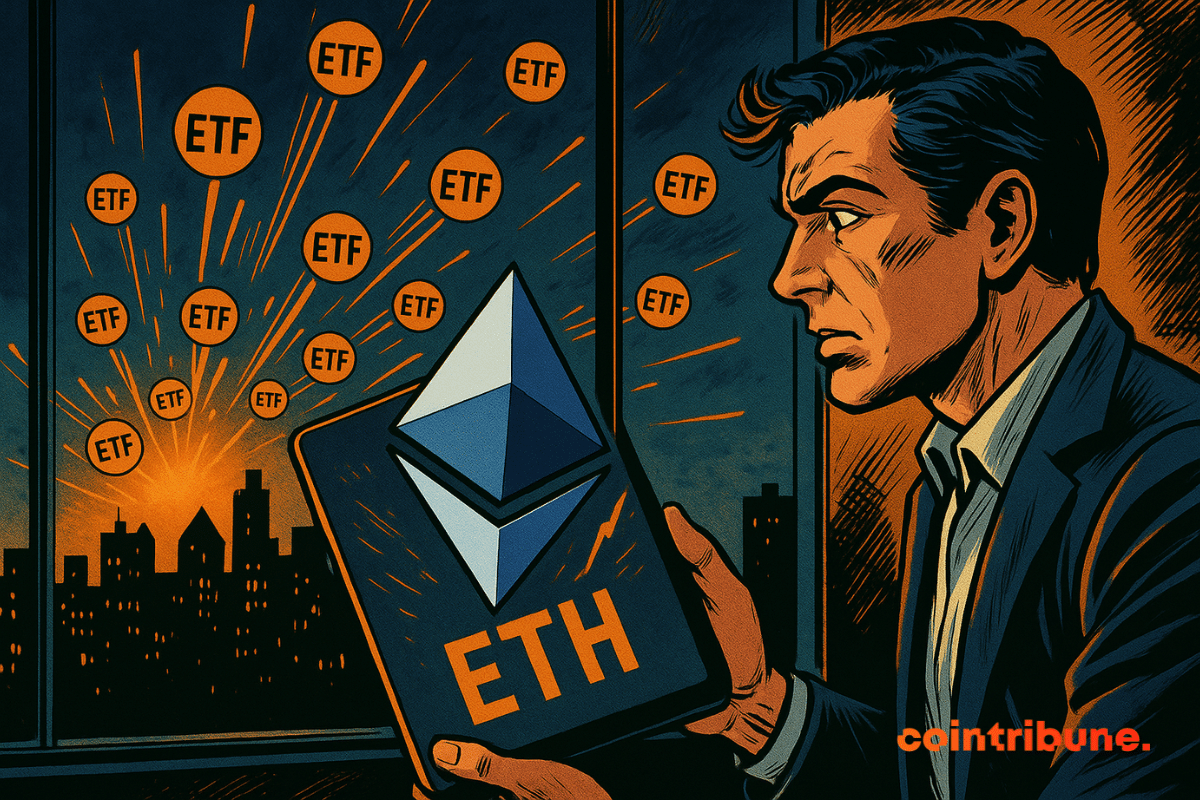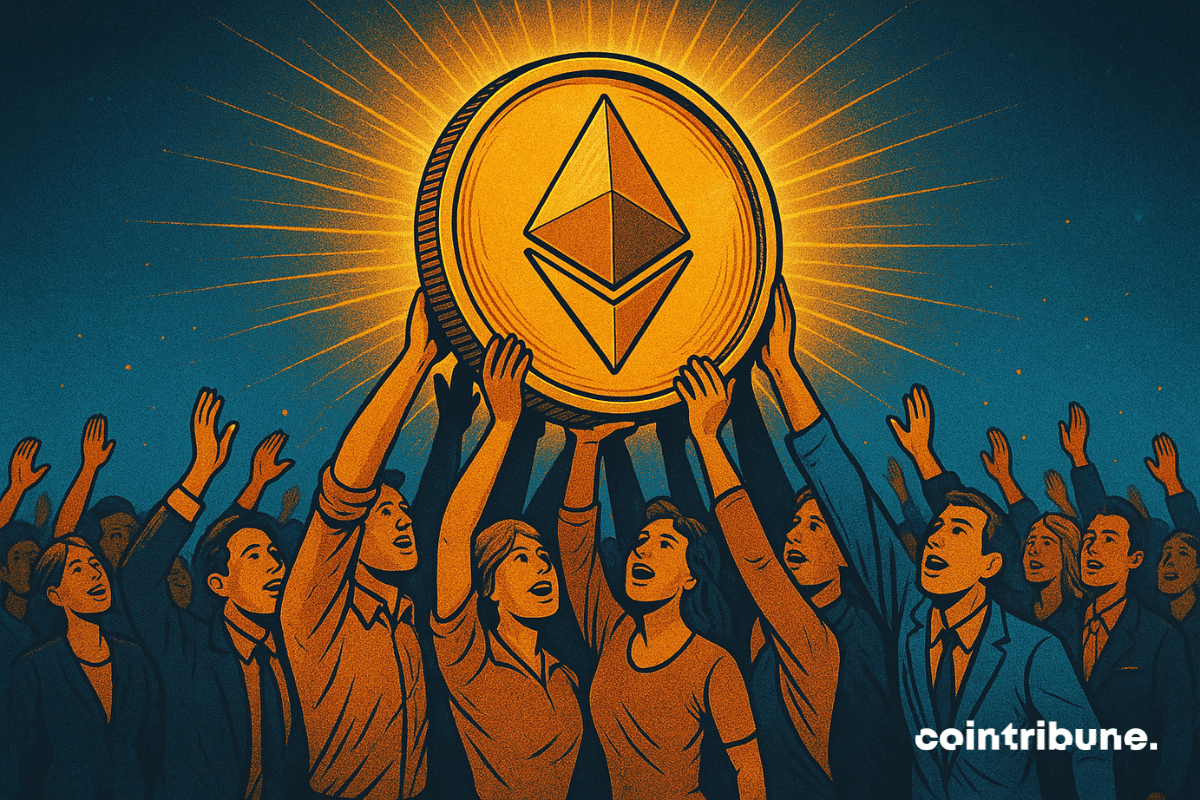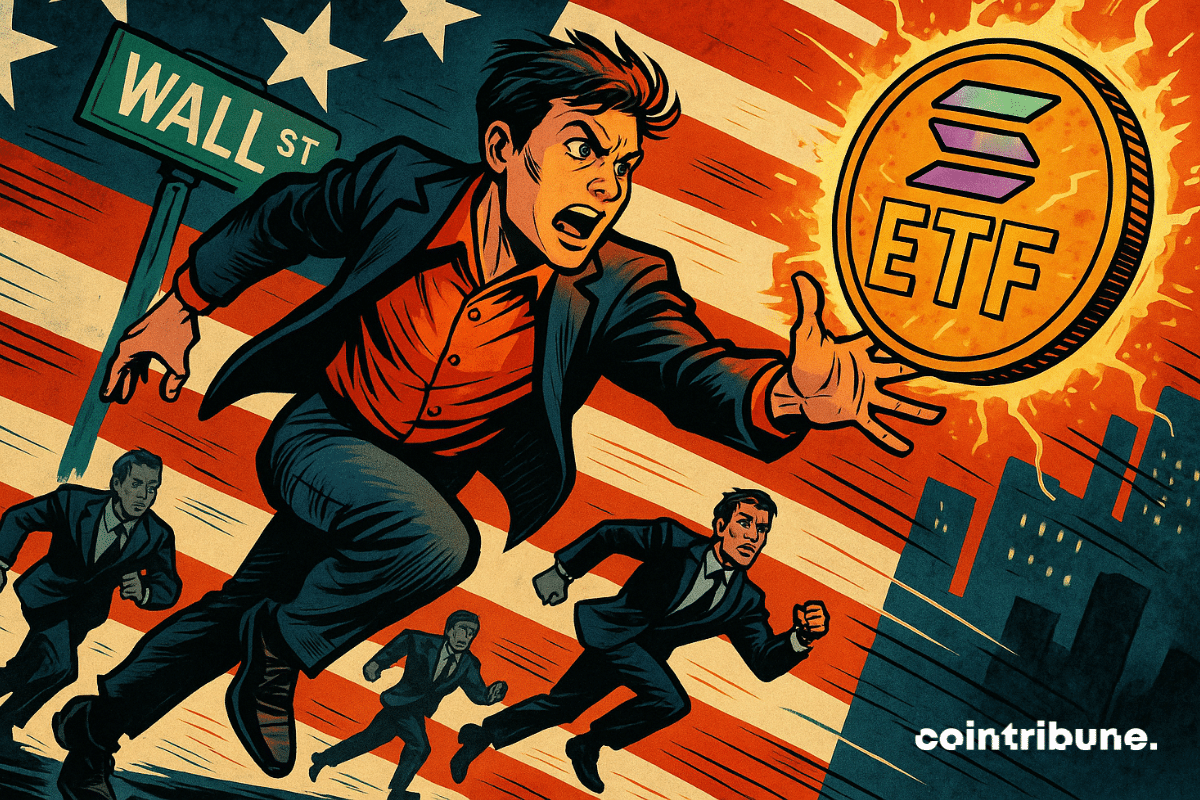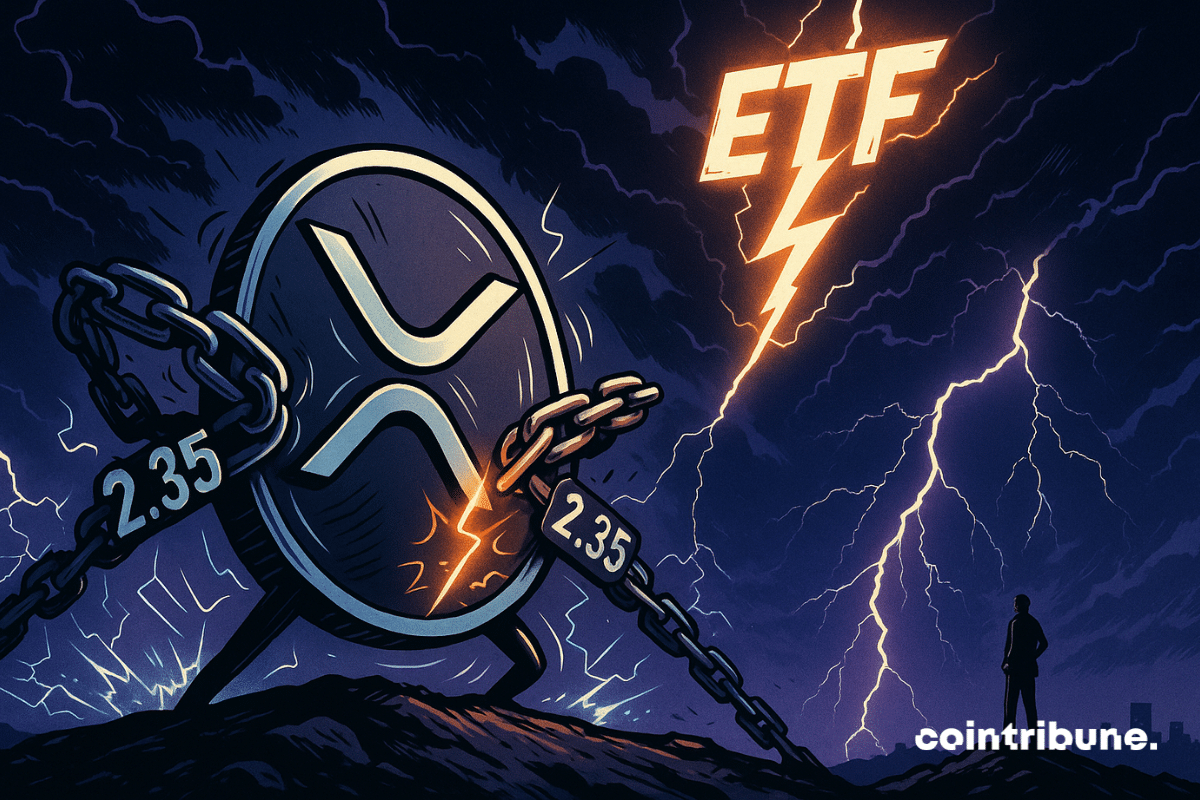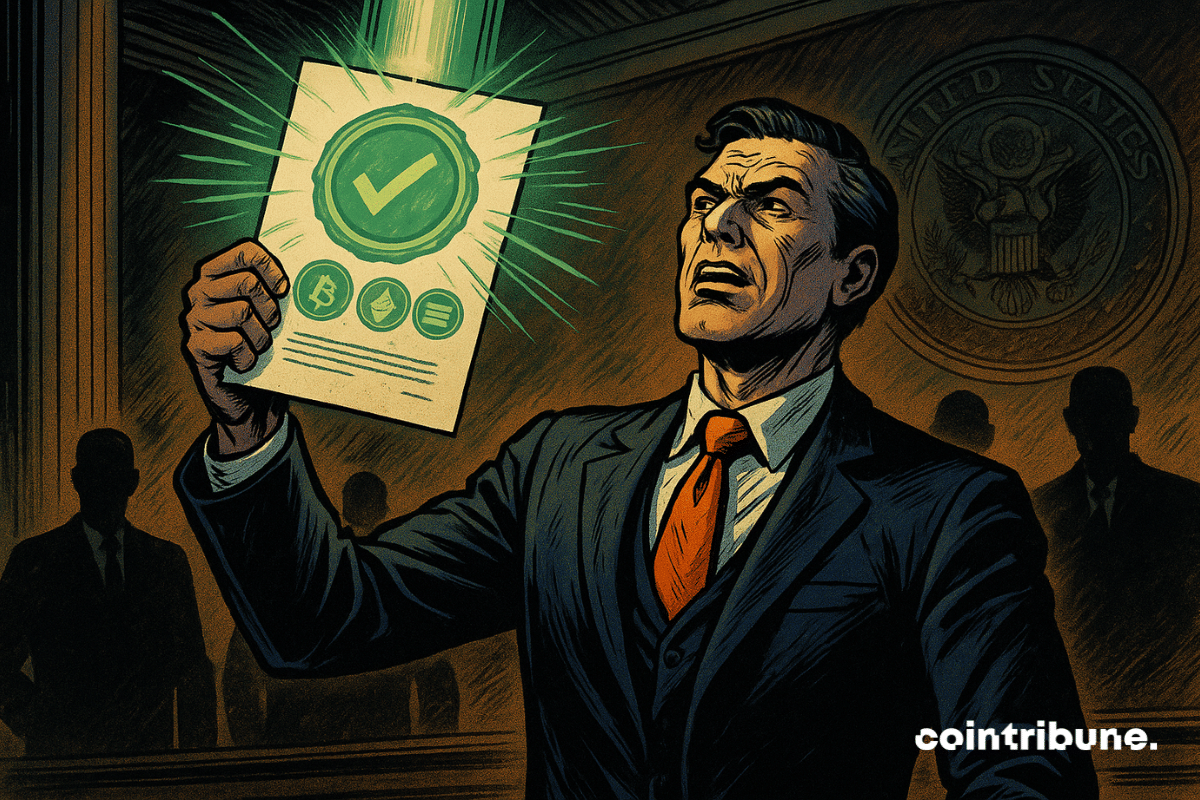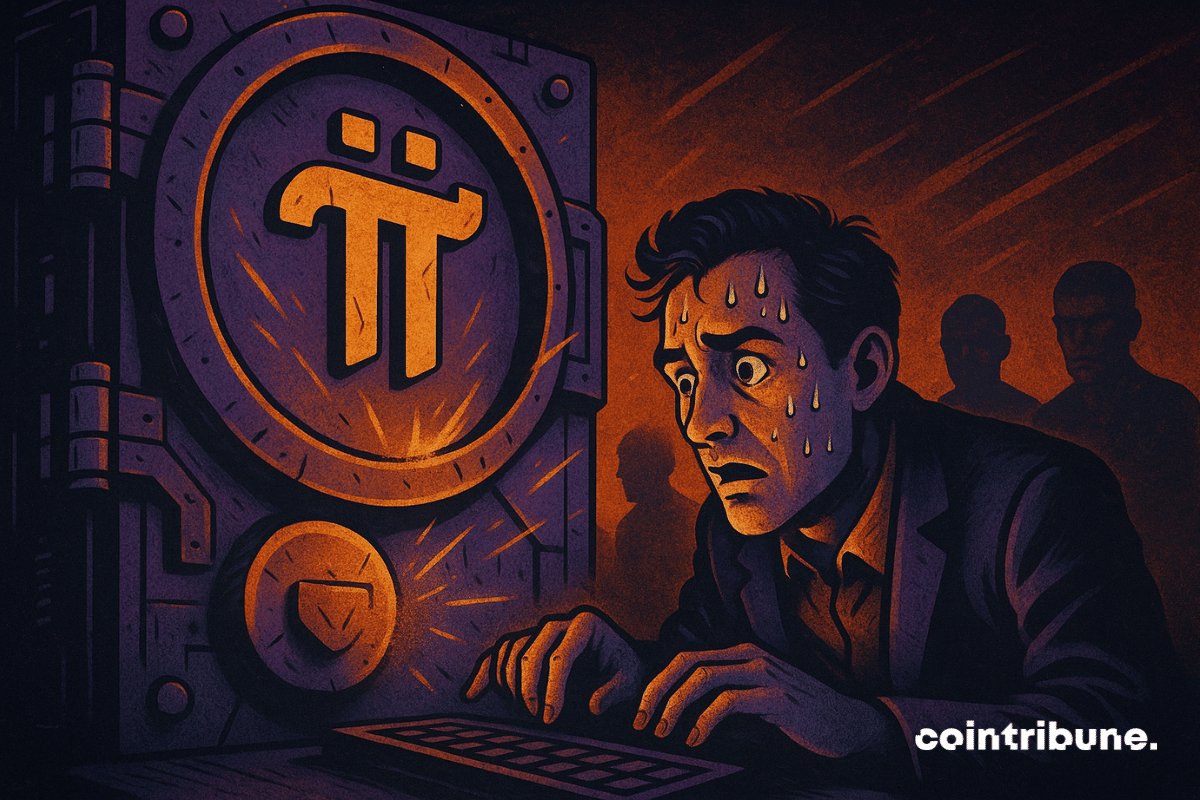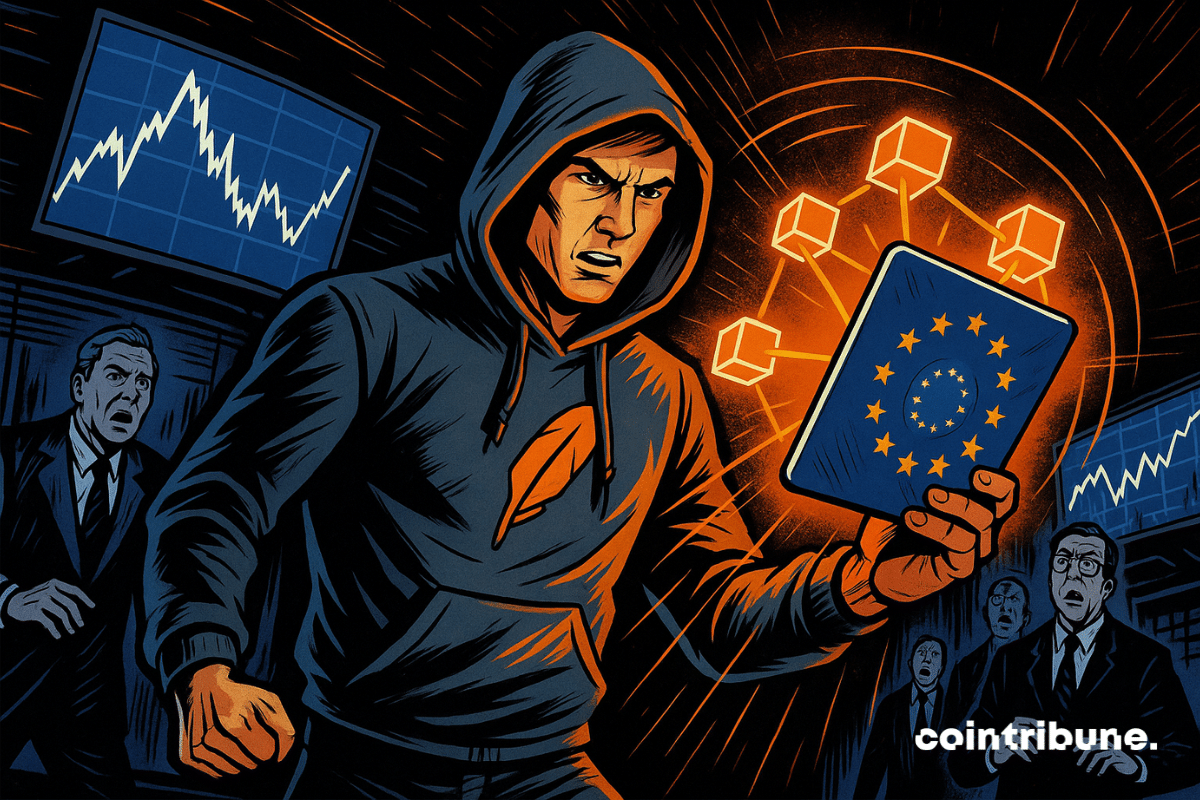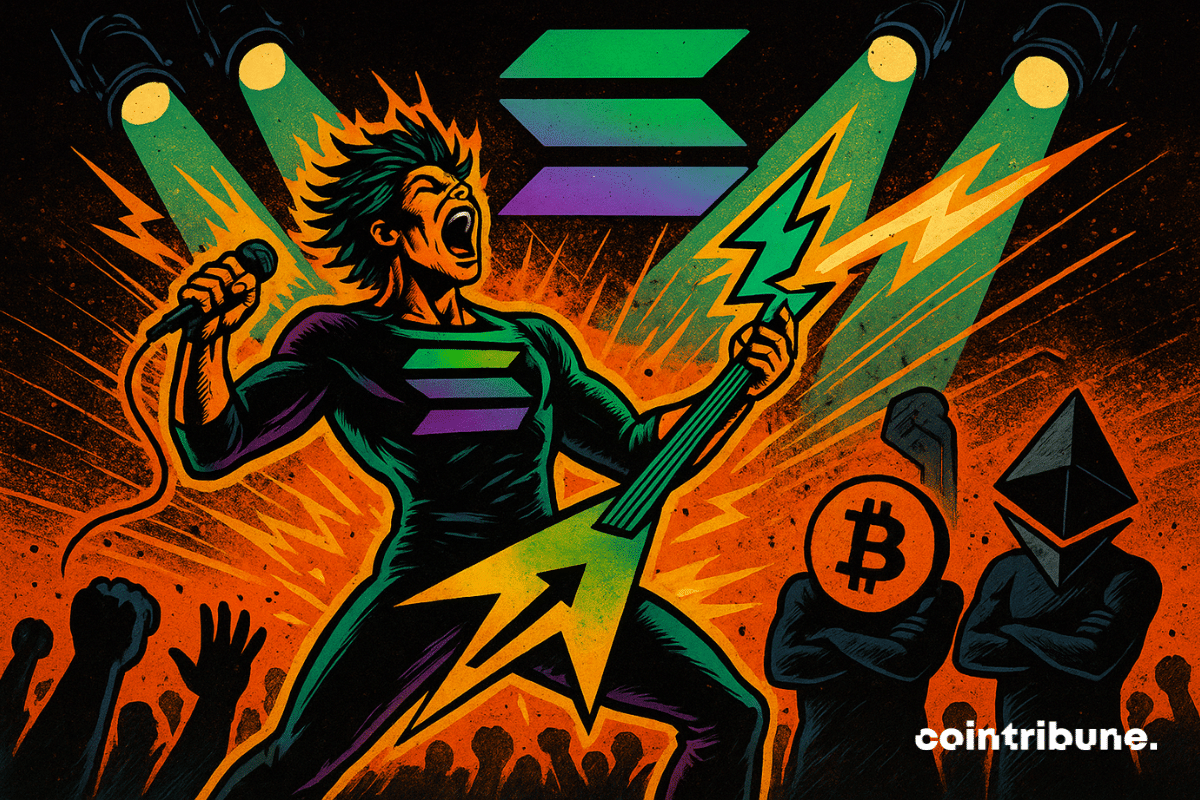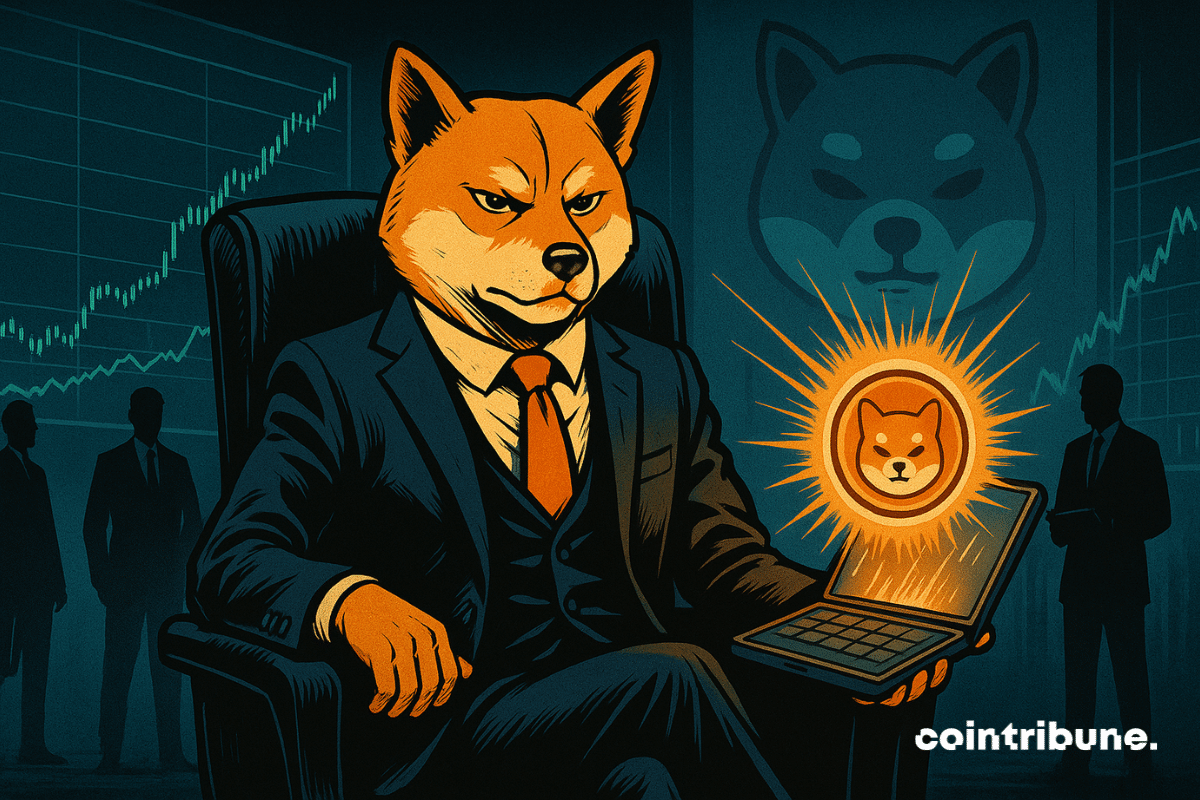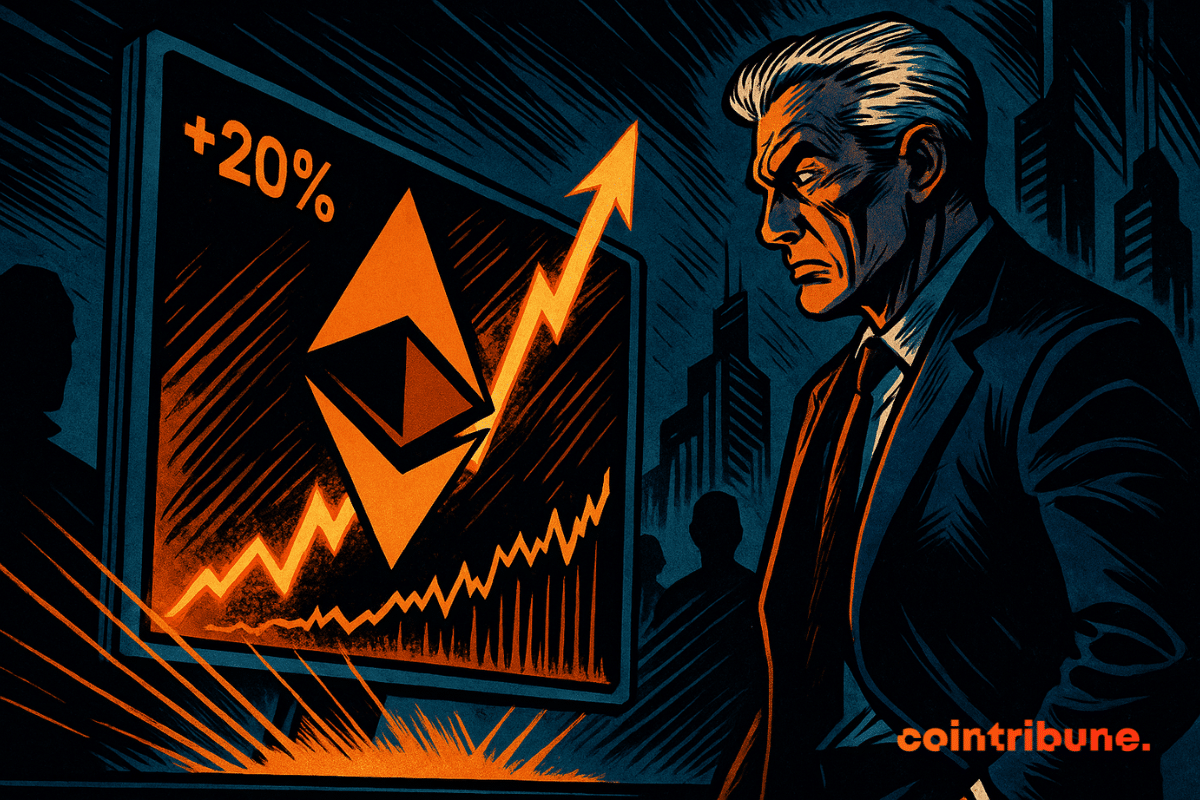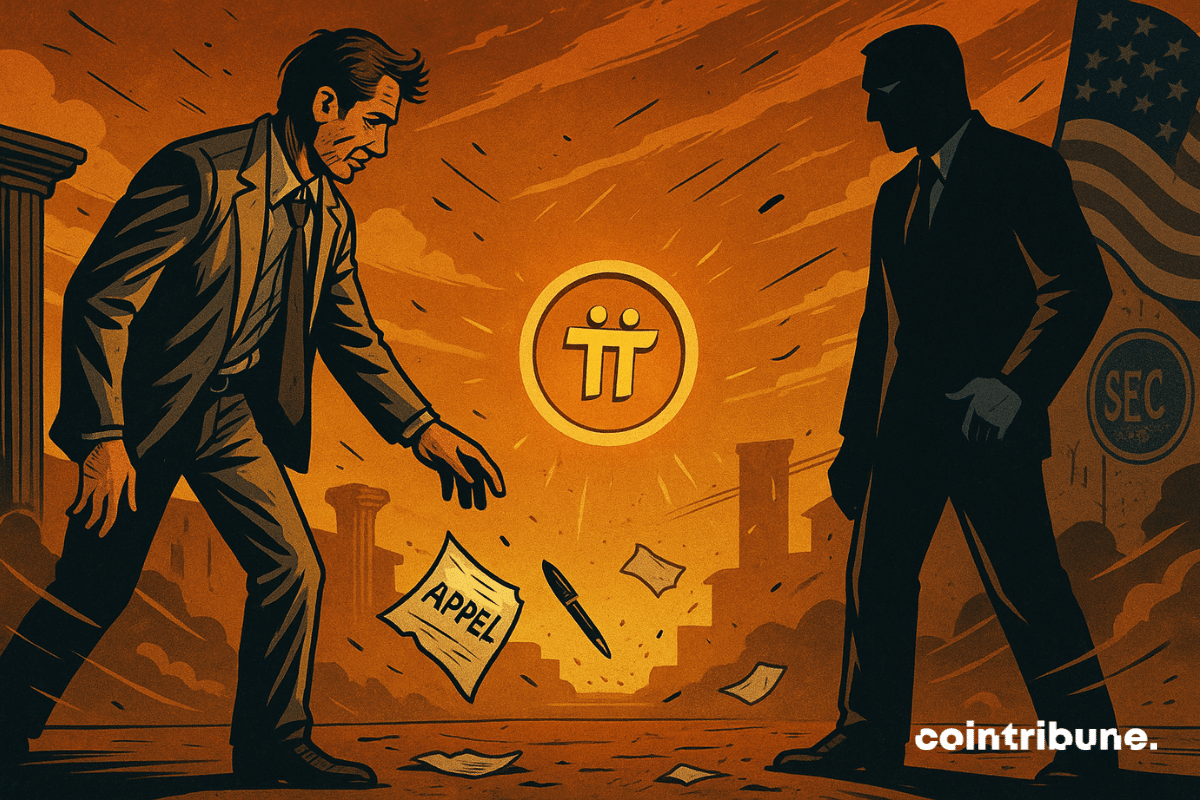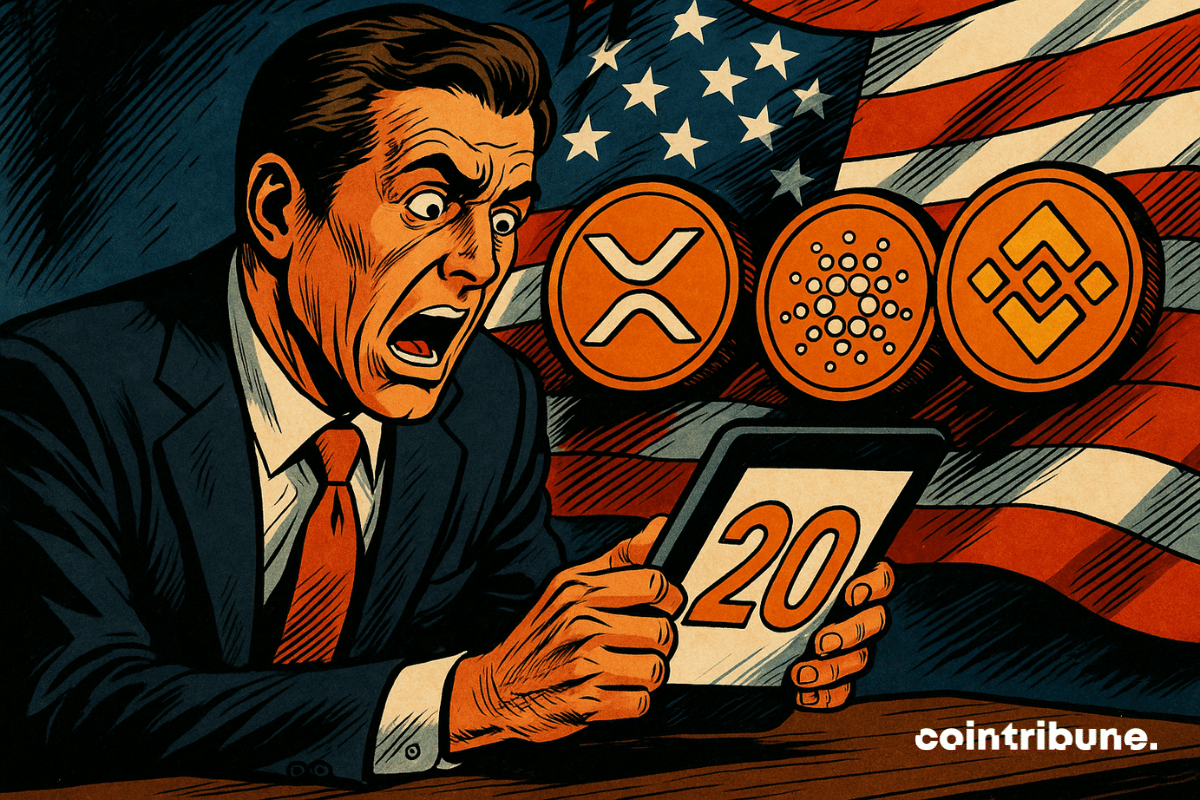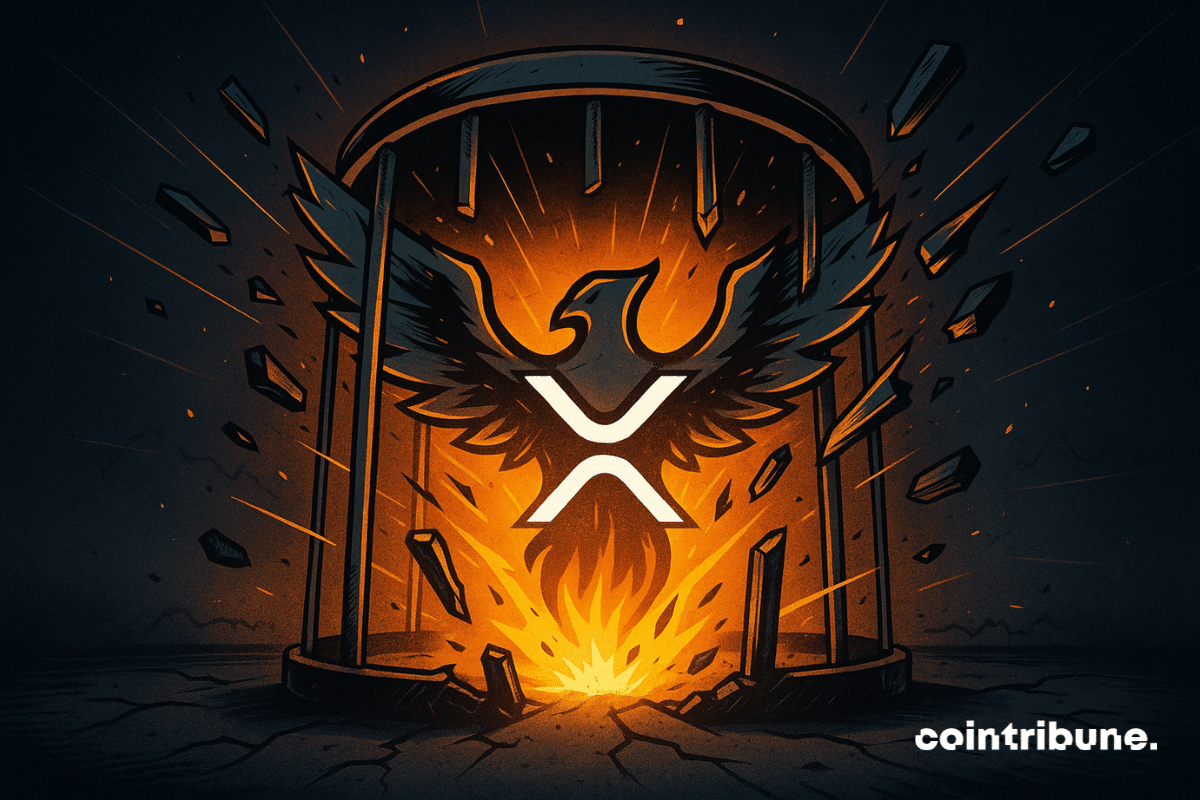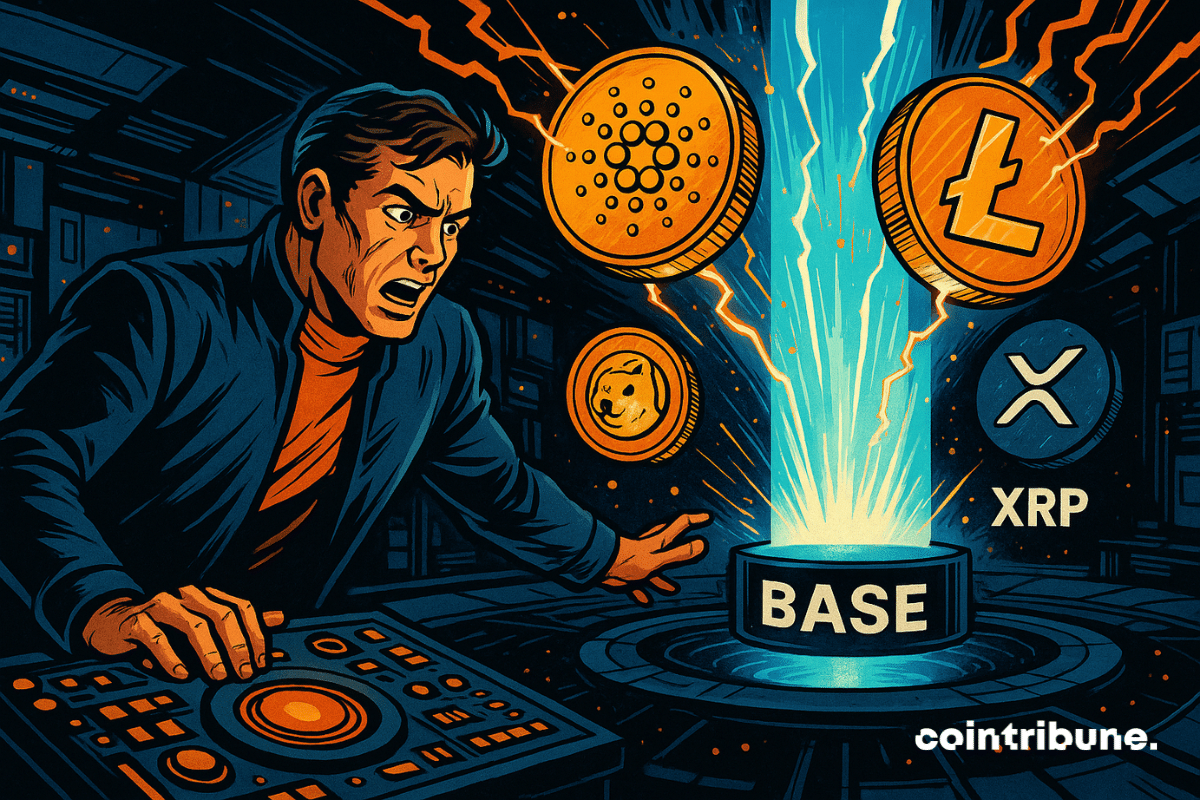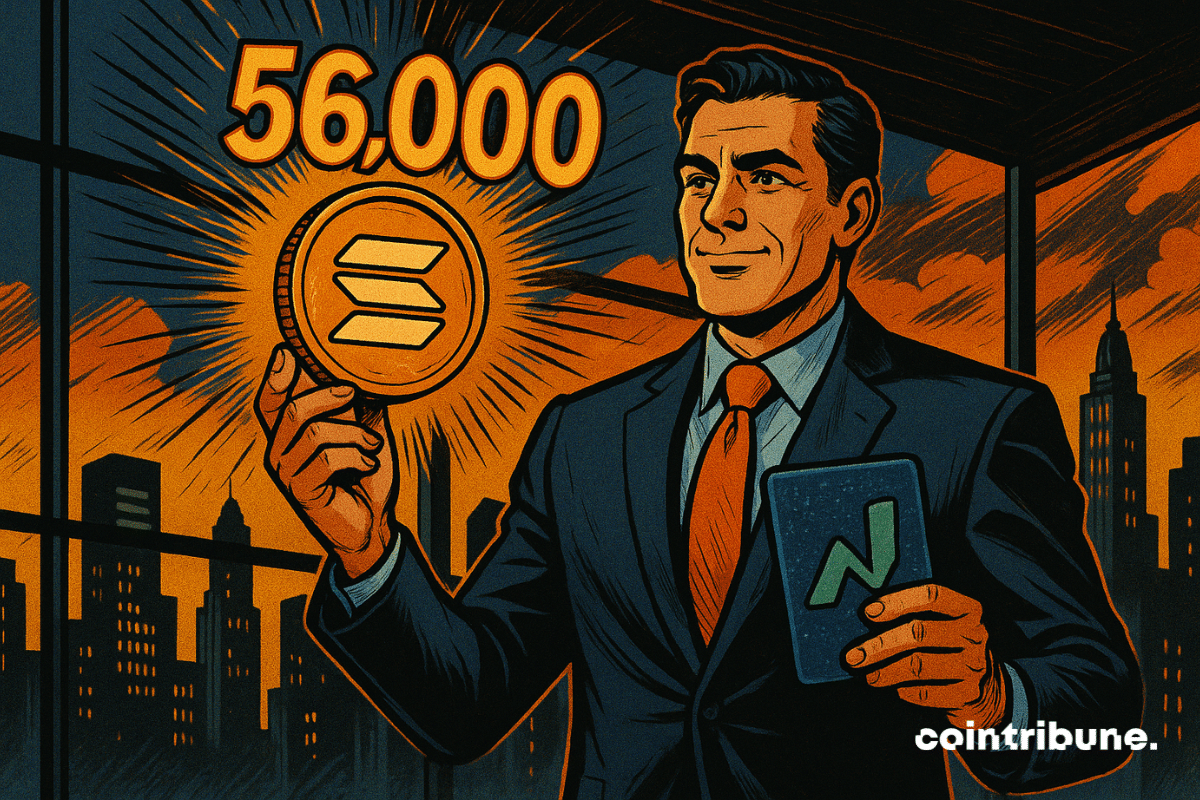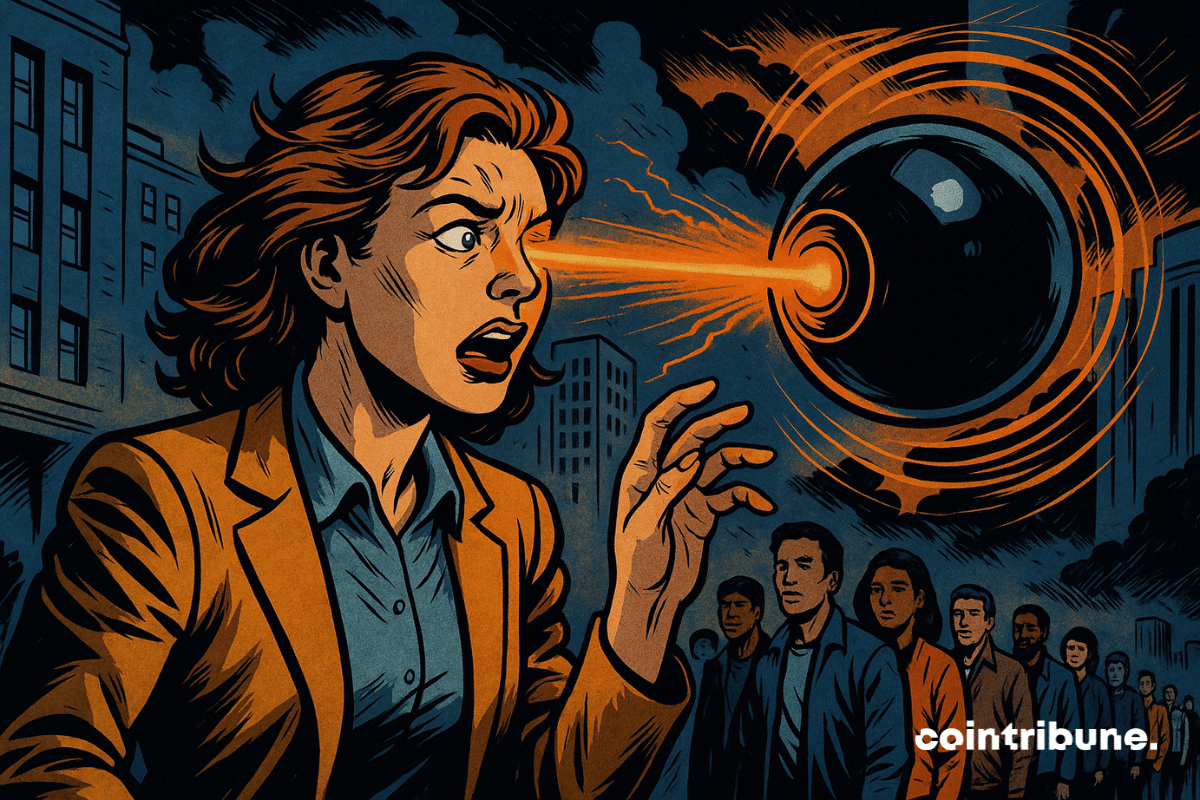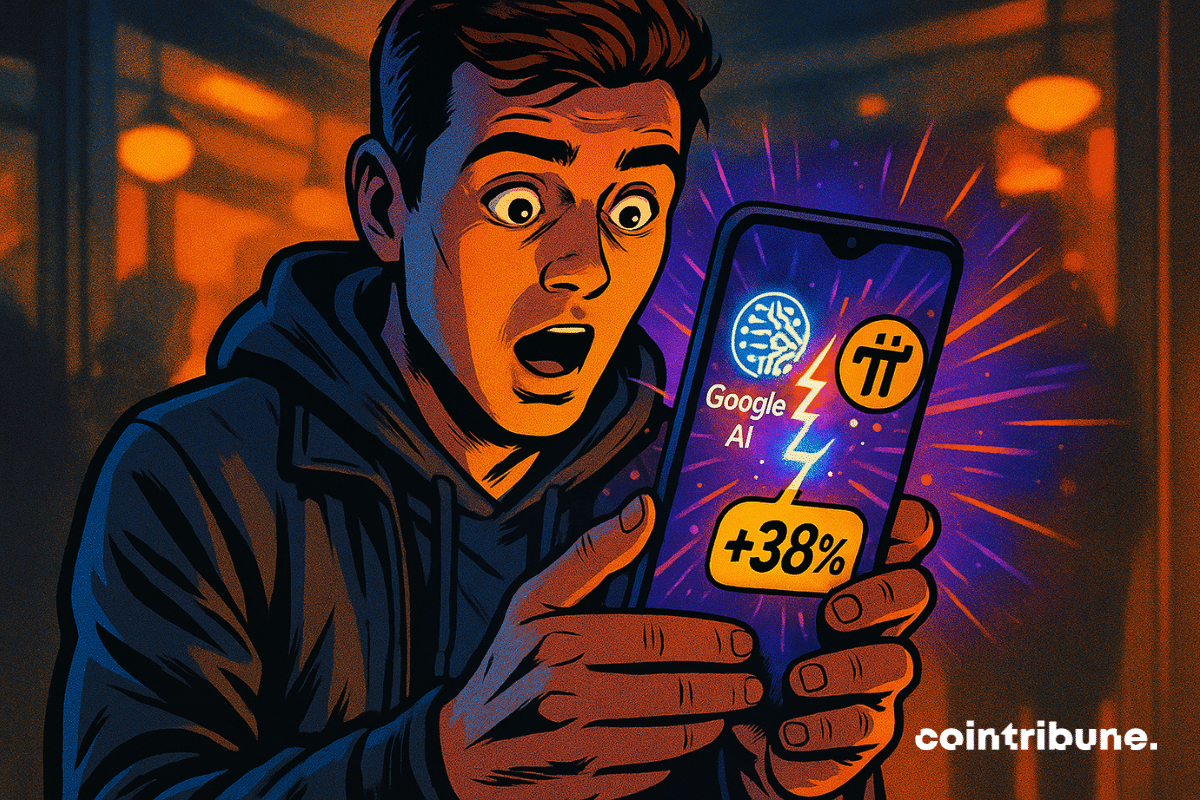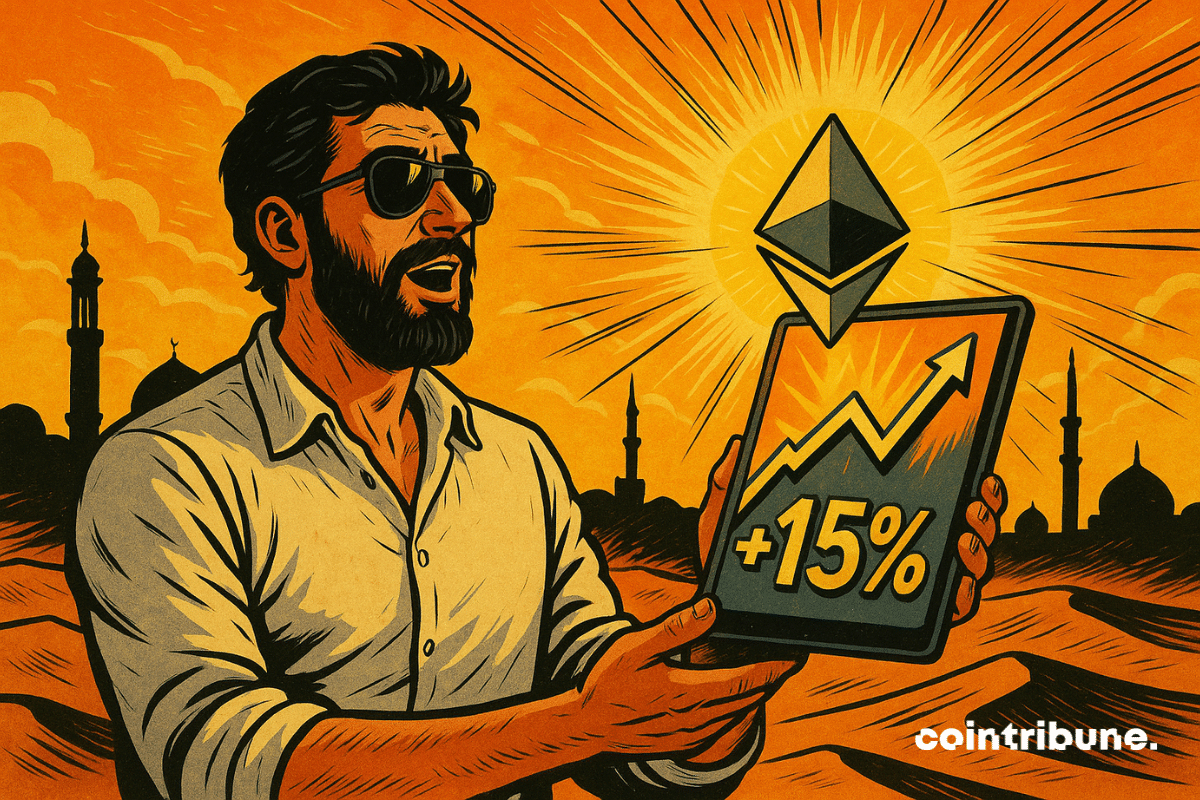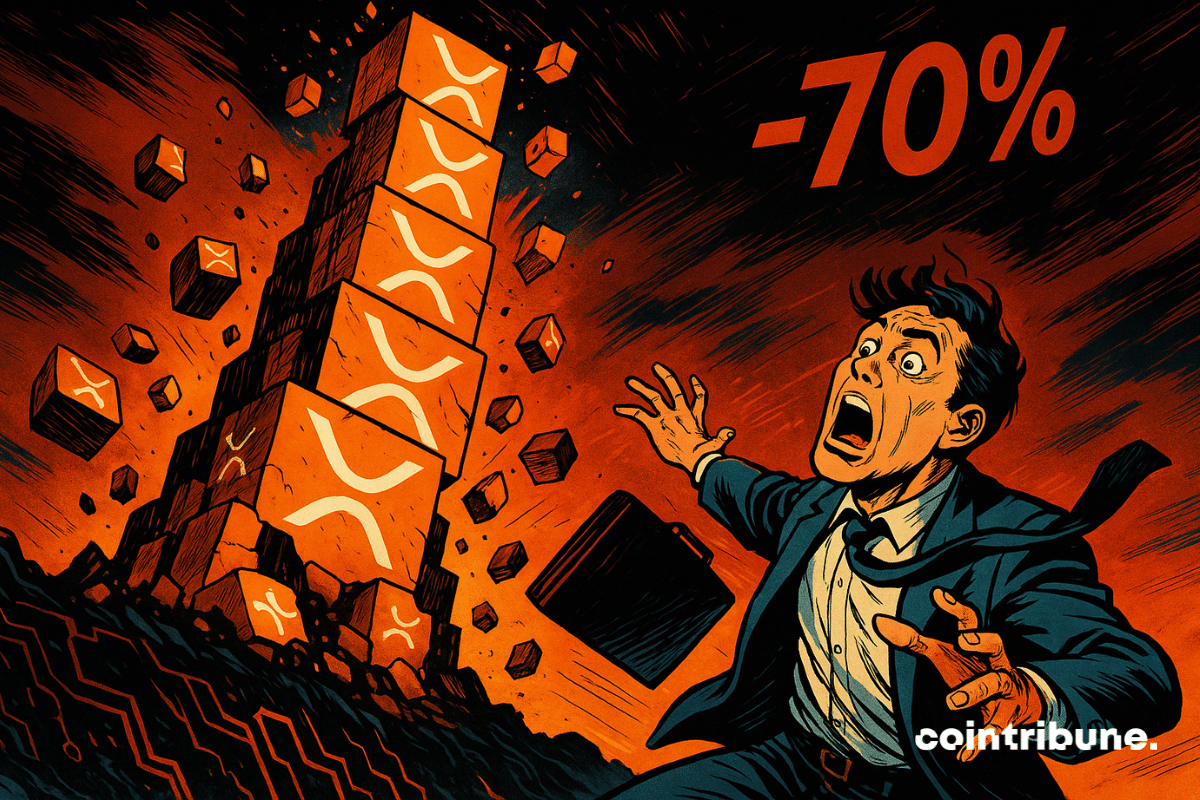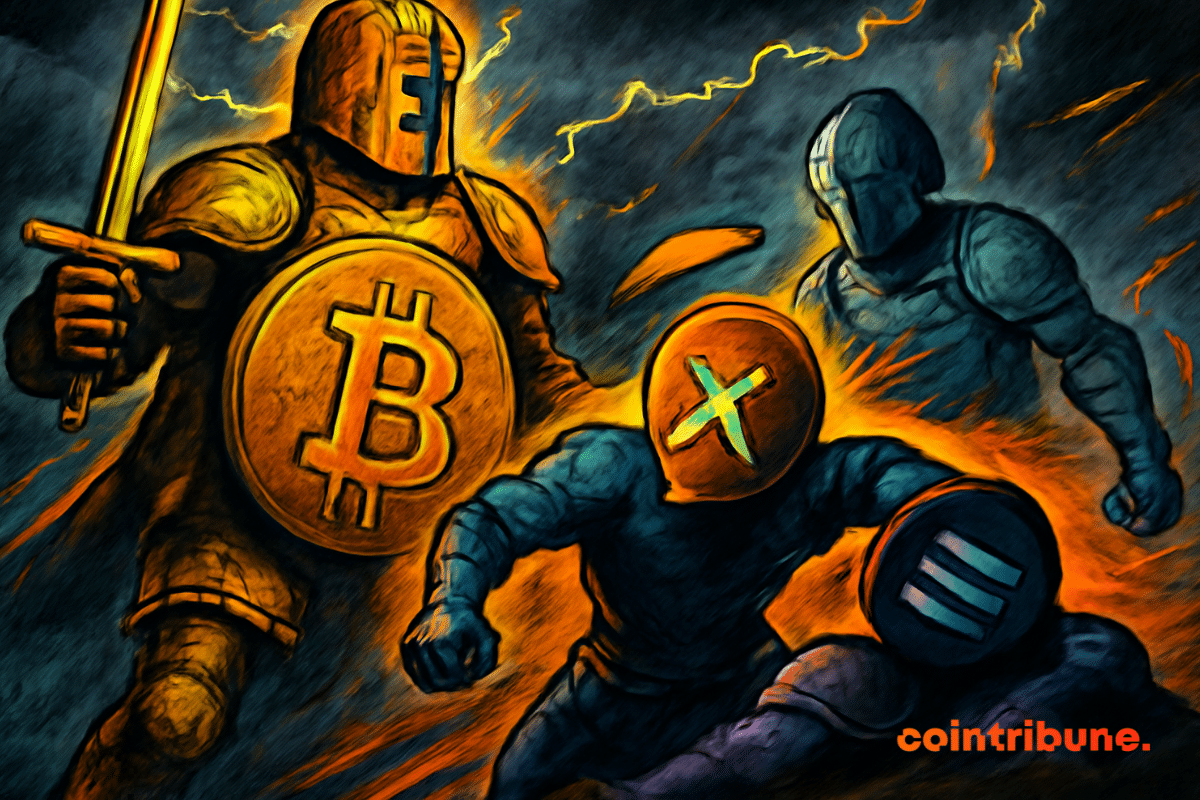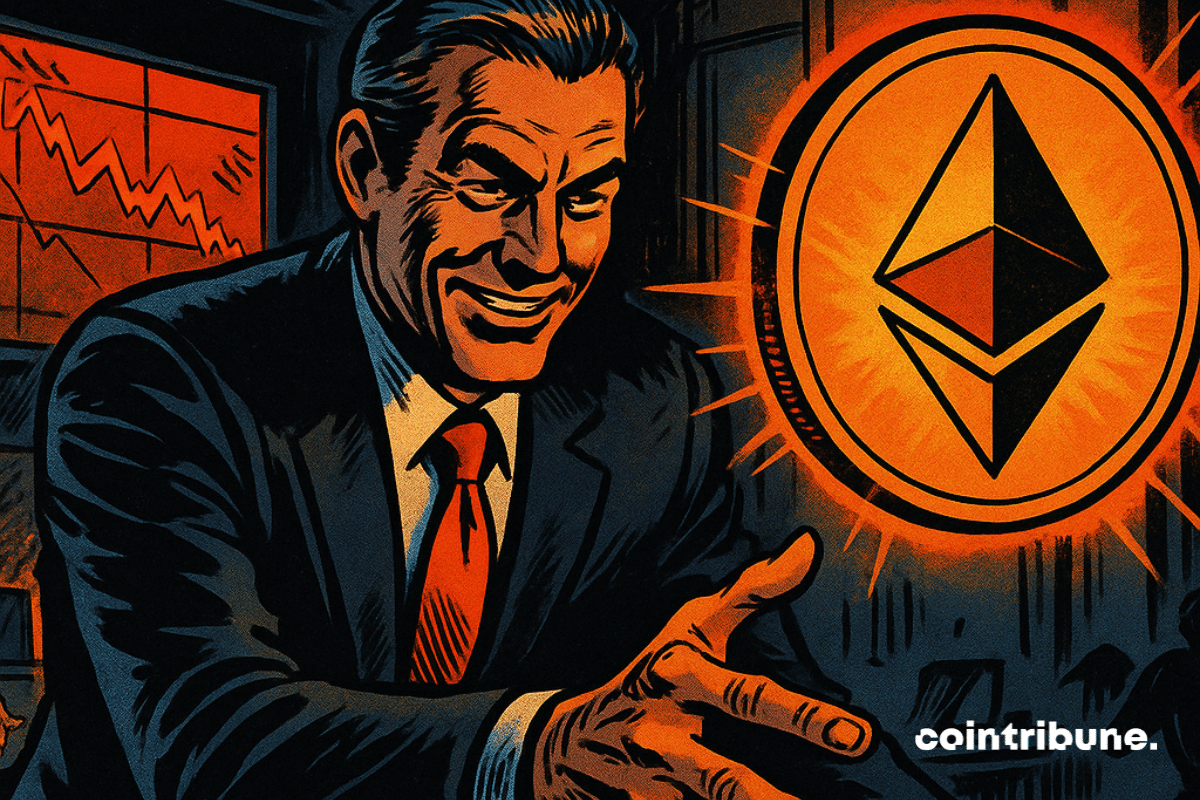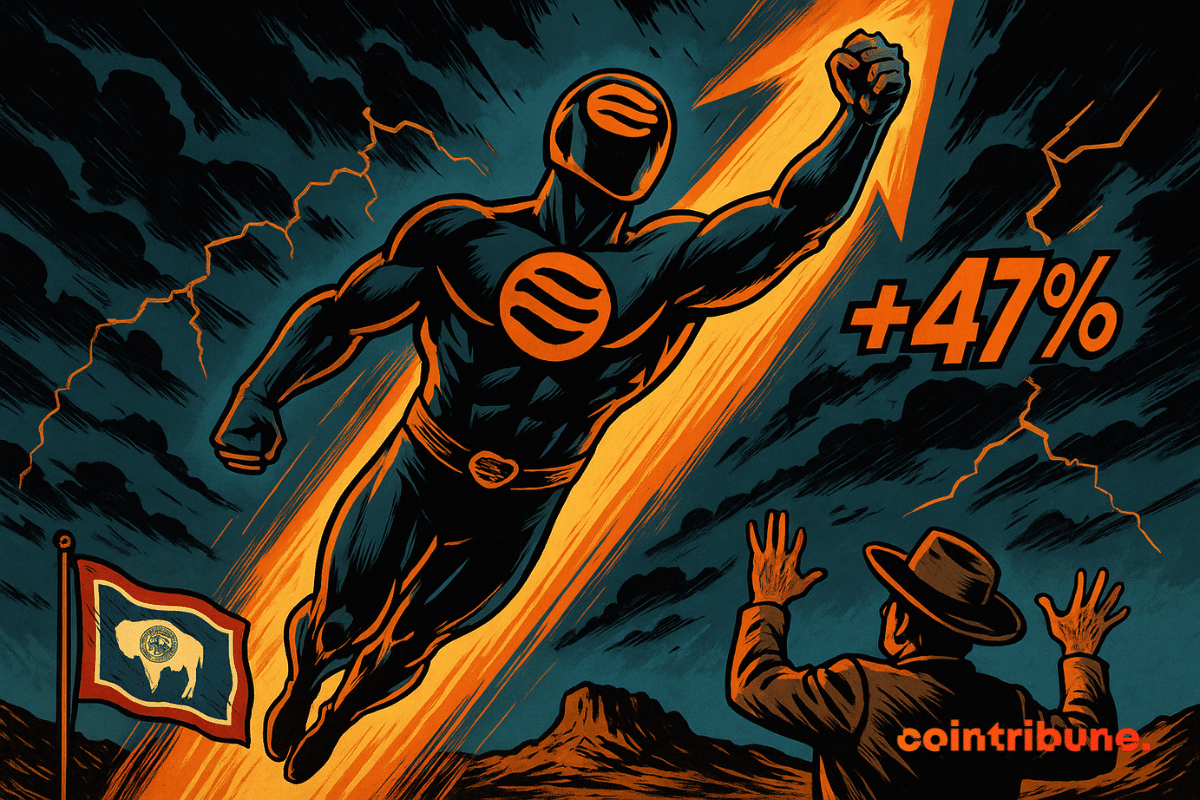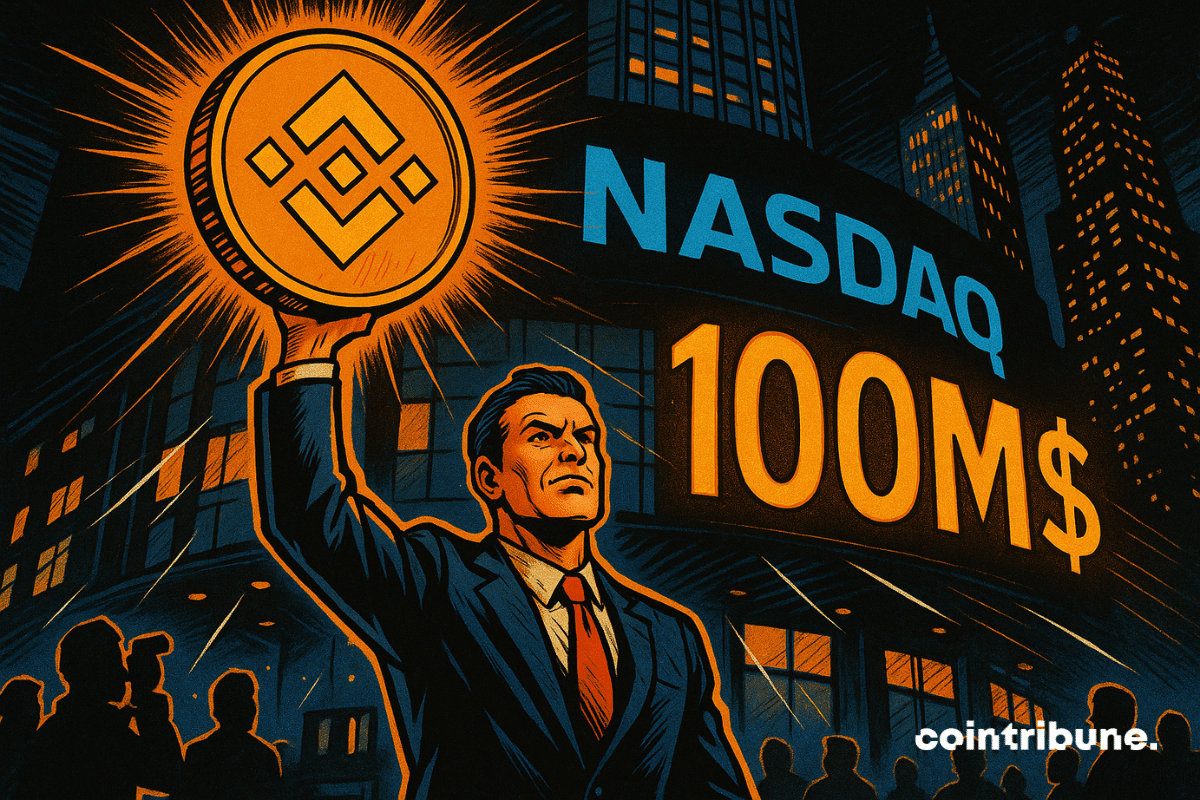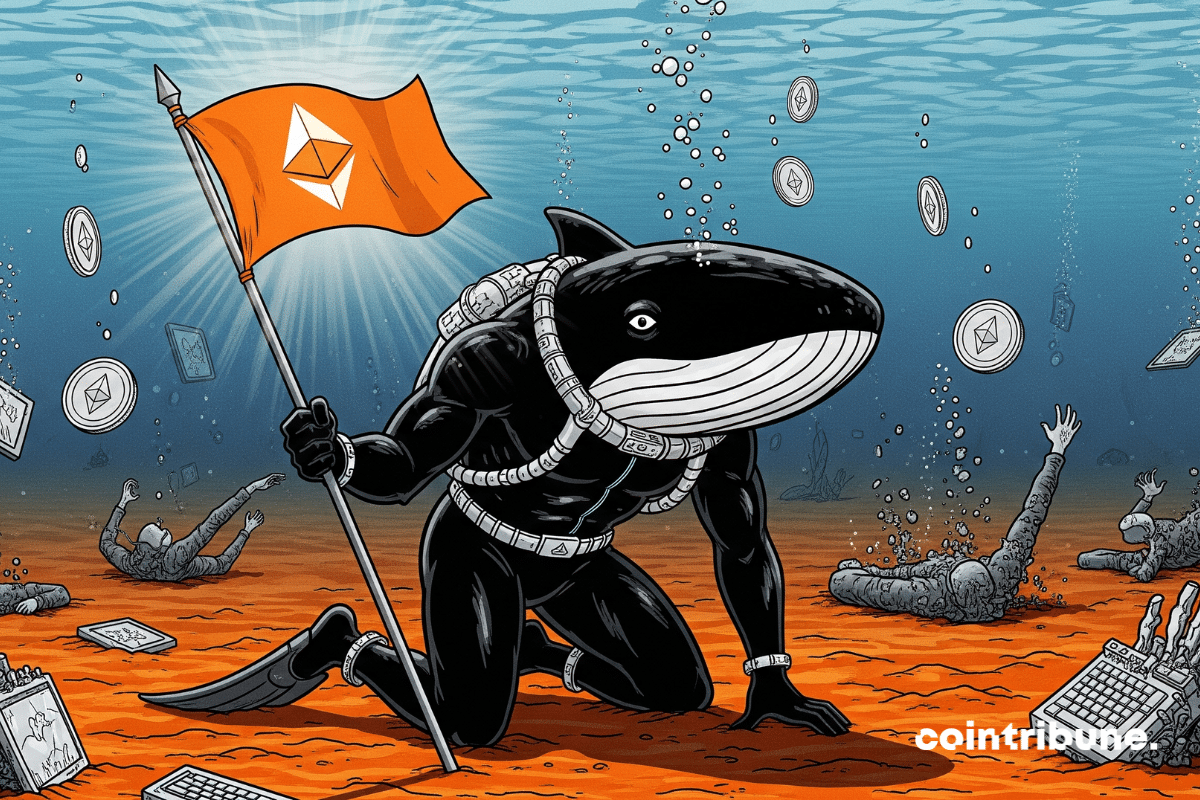Ethereum is stumbling, ETFs are exploding, big holders are accumulating, and retail is asleep. What if Ethereum's crypto is quietly preparing for a major upheaval? Here's a behind-the-scenes look.
Theme Altcoins
A new organization called the Ethereum Community Foundation (ECF) has launched with a clear mandate: support institutional-grade Ethereum infrastructure, drive long-term ETH value, and correct what it sees as strategic missteps by the Ethereum Foundation.
The REX-Osprey Solana + Staking ETF launches in the U.S., offering a new way for investors to gain Solana exposure while earning rewards through staking.
In a market searching for benchmarks, even the slightest regulatory rumor can tip the scales. XRP is a perfect illustration of this: trapped between $2 and $2.35, the asset is drawing increasing attention amidst speculation surrounding an ETF. Far from the usual tumult surrounding bitcoin, this tension places Ripple's crypto at the convergence of a double issue: technical unlocking and institutional recognition.
The crypto ecosystem takes a symbolic leap with the accelerated validation by the SEC of the conversion of the Grayscale Digital Large Cap Fund (GDLC) into an ETF. This green light is not limited to Grayscale. It marks the entry of altcoins into the regulators' field of action. In a context where the political climate is softening towards cryptos, this decision could pave the way for a new generation of ETFs focused on assets like XRP, Solana, or Cardano.
Pi Network is entering an unstable period. On July 4th, a massive influx of tokens will inflate the available supply in an already pressured market. After declining for six days, the PI cryptocurrency is struggling to convince, especially since the announcements from Pi2Day left investors wanting more. Between community disappointment and upcoming tensions, the project has a lot at stake in the coming days.
Robinhood opens a new chapter in its history by launching its own layer 2 blockchain to offer tokenized stocks to European investors. This technological offensive places Europe at the center of its crypto strategy: allowing investors from the Old Continent to trade American stocks 24/7, without commission. An advancement that could well reshuffle the cards of traditional trading. Analysis.
While Bitcoin and Ethereum are cautiously progressing in a calm market, it is Solana that is stealing the spotlight. In just one week, its price has soared by 16.5%, eclipsing the performances of the two historical pillars. This breakthrough is not trivial: it comes in the context of a return to fundamentals, where investors are once again scrutinizing technical signals and the robustness of projects. Solana, long relegated to the background, now seems to be repositioning itself as a serious contender for leadership in the next cycle.
While the crypto market is losing steam and volumes are dwindling, an unexpected movement is stirring Shiba Inu. In the span of 24 hours, whales have ramped up their purchases at an unprecedented pace, triggering an accumulation of SHIB of over 200%. This surge, which has gone under the radar of the general public, rekindles speculation about a possible reversal. Behind this renewed activity from large holders, it might be a phase change that is unfolding for one of the most closely watched memecoins in the ecosystem.
Ethereum is being hoarded by large holders, like nuts before winter. Meanwhile, the small ones are fleeing, scared. What if the whales are preparing a feast?
Polkadot aimed to become the backbone of Web3. However, the latest figures reported by Messari for the first quarter of this year reveal a sharp decline: decreased activity, falling users, and dropping market capitalization. While other ecosystems consolidate their traction, Gavin Wood's project struggles to fulfill its promises. The contrast between the network's advanced technical architecture and its low adoption fuels doubts: can Polkadot still embody the decentralized future it claimed to want to build?
Crypto cards are now competing with traditional banks for everyday purchases in Europe. With nearly half of transactions under 12 dollars, these new payment tools are transforming consumer habits. A silent revolution that is redefining the future of European payments.
After more than four years of legal battle and a globally scrutinized decision, Ripple is ending its showdown with the SEC. The withdrawal of its appeal, along with the one expected from the regulator, seals the epilogue of a landmark dispute for the crypto industry. In an environment where every action by the authorities influences the market, this outcome permanently clarifies the legal status of XRP and redefines the regulatory framework in the United States.
On the occasion of Pi2Day, celebrated every June 28, Pi Network unveiled two strategic features: a no-code application creation tool powered by AI and a community staking mechanism to promote projects. This initiative marks a turning point towards a more accessible platform, governed by its users. By focusing on intelligent automation and the decentralization of referrals, Pi Network aims to redefine the rules of mobile-first Web3, at the intersection of technological innovation and community engagement.
The XRPL network is becoming increasingly competitive: is a rise in XRP coming soon?
Grayscale upends the crypto hierarchy: XRP, ADA, and BNB fall out of its Top 20 in favor of Morpho and Avalanche. Details here!
As the crypto market oscillates between regulatory uncertainty and technical expectations, XRP captures the attention of the most strategic investors. For over four months, Ripple's flagship asset has remained stuck between $2.00 and $2.60, in a consolidation that intrigues. This stability, unusual for such an exposed crypto, fuels speculation about a possible breakout.
The world of crypto is evolving at a dizzying speed, and Coinbase knows it better than anyone else. In the midst of the DeFi sector's excitement, the American exchange continues to push the technical and economic boundaries of interoperability. This week, it is the turn of Cardano (ADA) and Litecoin (LTC) to cross a symbolic milestone: their integration in the form of "wrapped" tokens on Base, the Ethereum layer-2 network developed by Coinbase. This maneuver is not just a simple gadget, but a clear strategy to connect decentralized worlds to each other.
For a long time reserved for bitcoin, the role of strategic treasury asset is now expanding to other cryptos. Upexi, listed on Nasdaq, is a concrete illustration of this: it has strengthened its treasury with 735,692 SOL, valued at over 105 million dollars. And that's not all: the company also announces the tokenization of its shares on the Solana blockchain.
Pioneering in the market of proof of humanity, the company Tools For Humanity aims to increasingly expand the database of its Worldcoin project. It is only under this condition that it will be possible to effectively distinguish between humans and machines in the digital world. By prioritizing users verified by World ID in transactions on Worldchain, Sam Altman's company wants to encourage even more people to use the famous Orb and iris scan.
The Pi Network token jumped 38% this week, fueled by a series of signals interpreted as the beginnings of a partnership with Google AI. In the wake of this momentum, Nicolas Kokkalis's participation in a panel on artificial intelligence at Consensus 2025 and the imminent Pi2Day, scheduled for this Saturday, June 28, are stirring speculation. Although still in transition to its mainnet, the project is capturing attention and fostering hopes for a strategic turning point for its ecosystem.
After weeks of consolidation and volatility, Ethereum is regaining its strength and has shown a spectacular increase of 15% from its lows. This remarkable rebound puts ETH back in a strategically technical position where $2,800 becomes a credible target.
While the market focuses on price curves, a key indicator of real activity has collapsed. Payment volume on the XRP Ledger has dropped by nearly 70% in just a few days. Behind this discreet withdrawal lies a deeper questioning of the network's vitality, its concrete adoption, and the robustness of its operational model.
Bitcoin is tightening its grip on the crypto market as institutional interest grows. Meanwhile, XRP climbs, and Ethereum and Solana face shifting investor focus.
Thanks to OptimumP2P, Ethereum increases the communication speed between its nodes.
The investment giant BlackRock surprised the crypto market by resuming its massive purchases of Ethereum, just 24 hours after making a spectacular sale of over 8,000 ETH. Why this sudden turnaround?
In the unpredictable world of cryptos, sometimes all it takes is a single catalyst to thrust a project into the spotlight. This week, it's Sei (SEI), a still discreet altcoin, that surged by 47% in just 24 hours. What sparked this rise? An unexpected announcement from Wyoming, which is considering leveraging the Sei blockchain to launch its state-backed stablecoin. A major turning point that could make Sei one of the crypto revelations of 2025.
Financial markets are going through a fascinating period, where the boundaries between traditional finance and cryptocurrencies are increasingly blurred. BNB, the native token of the Binance ecosystem, is taking a bold new step by becoming the cornerstone of an institutional initiative listed on Nasdaq, fueled by an impressive raise of 100 million dollars.
Solana is gaining traction as ETF speculation intensifies. Rising CME activity, institutional filings, and growing public interest suggest the asset may be nearing a pivotal moment.
Despite the drop in Ethereum, whales are maintaining their positions. In this article, find an analysis of the key data to know.
